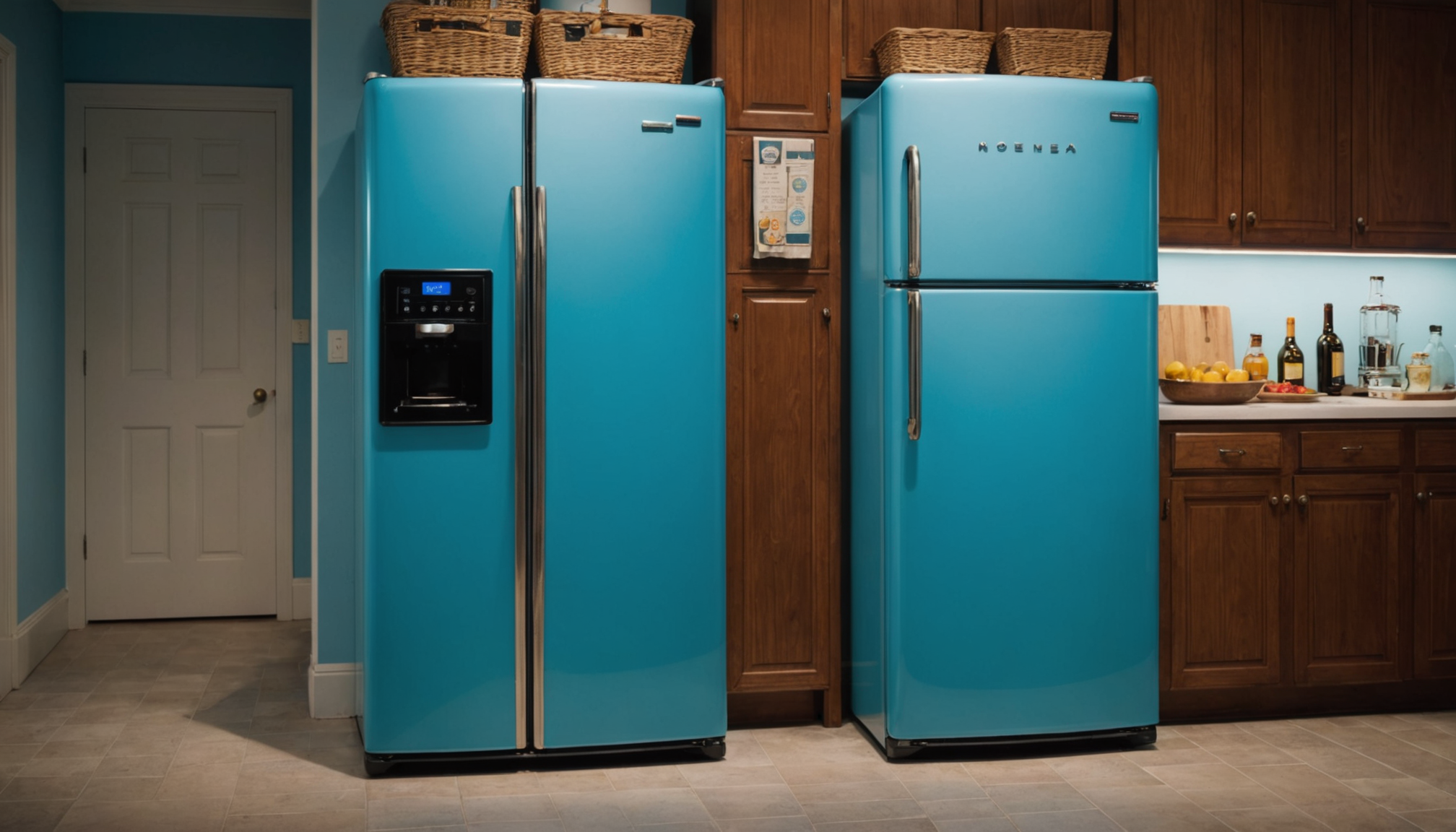The lifespan of household appliances can vary greatly, influenced by several factors such as brand, model, usage, and maintenance. When faced with the decision of appliance repair versus replacement, understanding the typical lifespan of an appliance is crucial for making an informed choice. This assessment helps homeowners determine whether a repair is a sound investment or if replacement might, in fact, offer better long-term benefits.
Household appliances are generally designed to last a certain number of years, after which their efficiency may decrease, and the likelihood of malfunction increases. Here’s a general guideline for the lifespan of some common appliances:
| Appliance | Average Lifespan (Years) |
| Refrigerator | 10-15 |
| Washing Machine | 8-12 |
| Dishwasher | 9-10 |
| Microwave | 7-9 |
| Stove/Oven | 10-15 |
Determining whether an appliance is near the end of its lifecycle can be a decisive factor in the appliance repair versus replacement debate. An older appliance, already past its anticipated lifespan, may not justify the cost of repairs, especially if ongoing issues are encountered. In contrast, repairing a newer model, which may still have several years of useful life left, could be more cost-effective. Conducting a cost analysis is essential to determine whether investing in repairs aligns with your long-term home services goals.
Moreover, the condition and frequency of use also heavily influence an appliance’s longevity. Regularly maintained appliances, receiving timely repairs and routine service checks, may surpass standard lifespan expectations. Conversely, appliances subject to heavy daily usage or neglected maintenance may wear out faster.
When considering appliance repair, it is also important to consult a professional to assess the potential for future problems. Expert technicians can provide insights into whether a repaired appliance can return to optimal performance or if underlying issues may persist, thereby affecting its longevity.
Assessing the lifespan of your appliances involves not only looking at the age and typical lifespan data but also factoring in the appliance’s history, brand reputation, and service requirements. Such evaluations can guide strategic decisions, potentially leading to more cost-effective appliance repairs and informed replacement choices, ultimately maximizing your investment in home services.
common repair costs and scenarios
When evaluating the common repair costs associated with household appliances, there are several key factors and scenarios that consumers typically face. Understanding these can significantly influence the decision between repair and replacement.
1. Identifying the Problem: Before considering costs, it’s essential to accurately diagnose the issue. For instance, a refrigerator that isn’t cooling properly could have numerous underlying causes, ranging from a malfunctioning thermostat to a defective compressor. Accurate diagnosis often requires a professional technician who can identify the root cause and suggest the best course of action.
2. Cost of Parts: The price of replacement parts can vary widely depending on the appliance and the problem. For example:
– Refrigerator: Replacing a compressor might cost between $200 and $500, including parts and labor.
– Washing Machine: A faulty motor usually costs around $150 to $300 to fix.
– Dishwasher: Common issues like a broken door latch or control board can range from $50 to $200.
3. Labor Costs: Labor is a significant part of the repair expense. Depending on the complexity of the issue and local rates, technicians might charge anywhere from $50 to $150 per hour. This can add up, especially if extensive troubleshooting or specialized skills are required.
4. Common Repair Scenarios:
– Minor Fixes: Small issues such as replacing door seals, adjusting controls, or cleaning blocked filters often involve minimal costs and can extend the appliance’s life significantly.
– Major Overhauls: For substantial repairs, such as replacing significant components like a motor or compressor, the costs rise considerably. These are often worth considering if the appliance is relatively new and expensive to replace.
– Recurring Issues: If the same problem recurs shortly after repair, it might indicate a more severe underlying issue or poor repair quality. In such cases, opting for replacement might be more economical in the long run.
5. Warranty and Insurance: If an appliance is still under warranty, repair costs might be covered, which could sway the decision towards fixing rather than replacing. Similarly, homeowners with appliance insurance should review their policy details to see if repairs are covered.
6. DIY Repairs: For those confident in their DIY skills, some minor repairs, such as replacing belts or clearing drain clogs, can be done personally, reducing costs. However, attempting complex repairs without expertise can sometimes exacerbate the issue, leading to higher expenses.
Performing a detailed cost analysis, considering both financial and functional aspects of appliance repair, provides clarity on whether to proceed with repairs or move forward with a replacement. This type of informed decision-making helps maximize investment in your home services and ensures the optimal function of household appliances.
calculating replacement benefits
When weighing the benefits of replacing an appliance, a comprehensive examination of several critical factors helps determine if the investment is justified. One significant advantage of replacing an aging or malfunctioning appliance is the potential for significant cost savings over time. New appliances often come with improved energy efficiency, leading to reduced utility bills. Features like low-consumption motors, advanced control systems, and eco-friendly settings can collectively result in considerable financial savings, which, over the life of the appliance, may offset the initial purchase cost.
Moreover, updated models frequently come with enhanced functionality and convenience. Features such as smart home connectivity, touch screen interfaces, and programmable settings provide users with added convenience and the ability to manage appliances remotely. Customers may find these advanced functionalities enhance their home services experience, offering a level of efficiency and ease of use that older models simply cannot provide.
Another primary replacement benefit is the reliability and reduced likelihood of breakdowns with new appliances. As appliances age, the frequency of repairs can increase exponentially, turning them into financial drains. Newer models reduce this risk significantly, often coming with warranties covering both parts and labor for several years. This assurance can significantly alleviate concerns about unexpected costs, allowing for better budget management over time.
A further advantage is the increased availability of customer support and parts, as manufacturers are more likely to readily support new models than outdated ones. This availability ensures faster service and maintenance if issues do arise, minimizing appliance downtime.
Finally, replacing older, less effective appliances with new ones aids in maintaining resale value of a home. Potential buyers typically view updated appliances as attractive because they signal reduced immediate investment post-purchase, and this can make a home more appealing on the market. Consequently, this replacement can boost property value and decrease the time a home spends on the market.
In sum, moving forward with an appliance replacement involves more than just spending money upfront—it is an investment in efficiency, convenience, reliability, and long-term cost savings, ultimately contributing positively to the management of home services.
environmental impact considerations
When considering the environmental impact of choosing between appliance repair and replacement, several critical factors come into play, especially as increased attention is paid to sustainability and eco-conscious living. With older appliances, one of the main environmental concerns is energy efficiency. As they age, appliances tend to become less energy-efficient, resulting in higher energy consumption and increased utility bills. This inefficiency contributes to a larger carbon footprint, which is a significant factor in global environmental issues.
On the other hand, new appliances typically come with enhanced energy-saving features that align with modern environmental standards. Technologies such as Energy Star ratings are designed to provide consumers with options that reduce energy use and lower greenhouse gas emissions. Therefore, when assessing whether to repair or replace an appliance, it is crucial to perform a detailed cost analysis that includes not only financial costs but also potential energy savings and the consequent reduction in environmental impact.
Additionally, the materials used in manufacturing new appliances are often more environmentally friendly. Many manufacturers are now focusing on using sustainable materials and processes that have a reduced impact on the planet. In contrast, repairing an existing appliance might involve using older, less eco-friendly components. Furthermore, the transportation of parts and the overall repair process itself could contribute to environmental degradation if not managed sustainably.
The concept of sustainable disposal also plays a pivotal role in this decision. Electronic waste is a growing problem, as discarded appliances can contribute to environmental pollution if they end up in landfills. Opting for a repair may mean delaying the eventual disposal of an appliance, while replacement involves the responsibility of ensuring the old appliance is recycled appropriately. It’s critical to engage with reputable recycling programs or manufacturers that offer take-back services that ensure components are repurposed or disposed of in an environmentally responsible manner.
For those striving for a balance between economic considerations and environmental responsibility, visiting resources like LocallyFind.com can be invaluable. This home services directory connects users with local professionals who not only offer expert appliance repair services but also provide guidance on environmentally sustainable practices. These professionals can help evaluate whether repair or replacement aligns better with eco-friendly initiatives and leads to reduced environmental impact without compromising economic goals.
Taking the big picture into account, the decision between repairing or replacing an appliance should weigh eco-friendliness alongside budgetary constraints and long-term functional benefits. Incorporating environmental considerations into your decision-making process can not only support sustainability efforts but also promote a greener lifestyle, simultaneously optimizing your home services strategy.
making the right decision for your budget
Evaluating the financial implications of appliance repair versus replacement involves a detailed examination of one’s budgetary boundaries and financial goals. This complex decision often hinges on a thorough cost analysis that carefully weighs immediate expenses against potential long-term benefits. For homeowners with strict budgetary limits, the upfront expense of appliance repair might initially appear more appealing, particularly if the repair costs are significantly lower than the replacement expense. However, one must consider if this approach truly offers the best value over time.
Taking into account the potential for recurring repair costs is essential. Even a seemingly minor repair can become a recurring financial burden if ongoing issues persist. In some scenarios, continuously repairing an aging appliance could result in death by a thousand cuts, collectively exceeding the cost of a new appliance when viewed cumulatively.
Conversely, investing in a replacement may strain a budget initially but offer long-term savings. Enhanced energy efficiency found in many modern appliances can lower monthly utility bills, gradually offsetting the higher sticker price. Additionally, newer models generally provide more reliable performance, thus potentially reducing ongoing maintenance costs and associated service disruptions.
To navigate this decision within the constraints of a budget, homeowners should explore financing options, including payment plans or credit offers provided by retailers, that can make the transition to a new appliance more manageable. It is equally crucial to examine warranty options, which can provide peace of mind and cost coverage if issues arise with the new purchase.
Ultimately, making the right decision for your budget involves balancing the short-term allure of lower repair costs against the potential long-term benefits—such as energy savings and reduced maintenance—associated with replacement. Utilizing comprehensive strategies with a clear vision of financial priorities will allow homeowners to make informed decisions that align with both their budgetary constraints and home service needs.
In conclusion, deciding between appliance repair and replacement is a multifaceted dilemma that requires careful consideration of various factors, including lifespan, costs, potential savings, and environmental impact. By conducting a thorough cost analysis and aligning choices with both financial constraints and longer-term goals, homeowners can make strategic decisions that optimize the functionality and sustainability of their home services.


